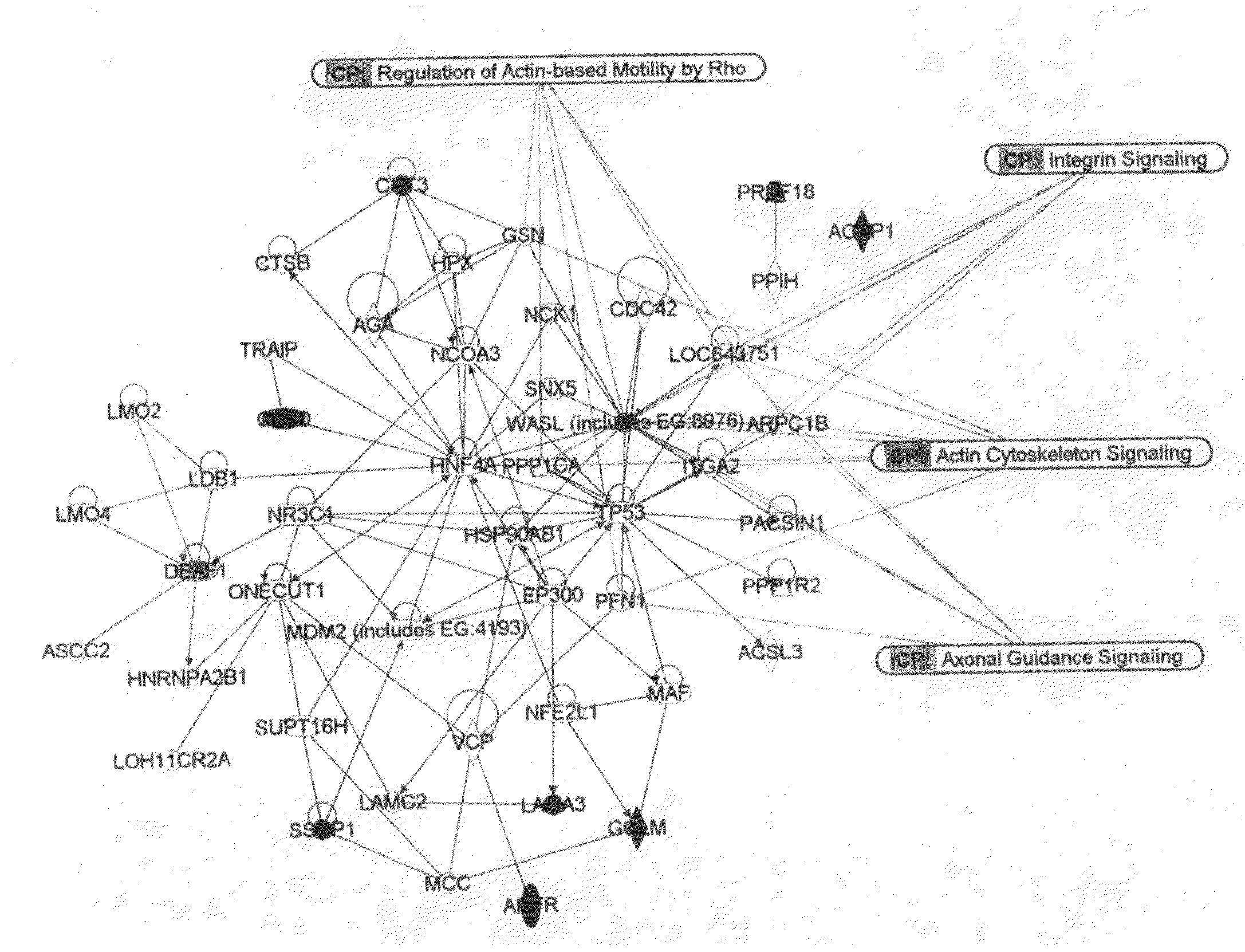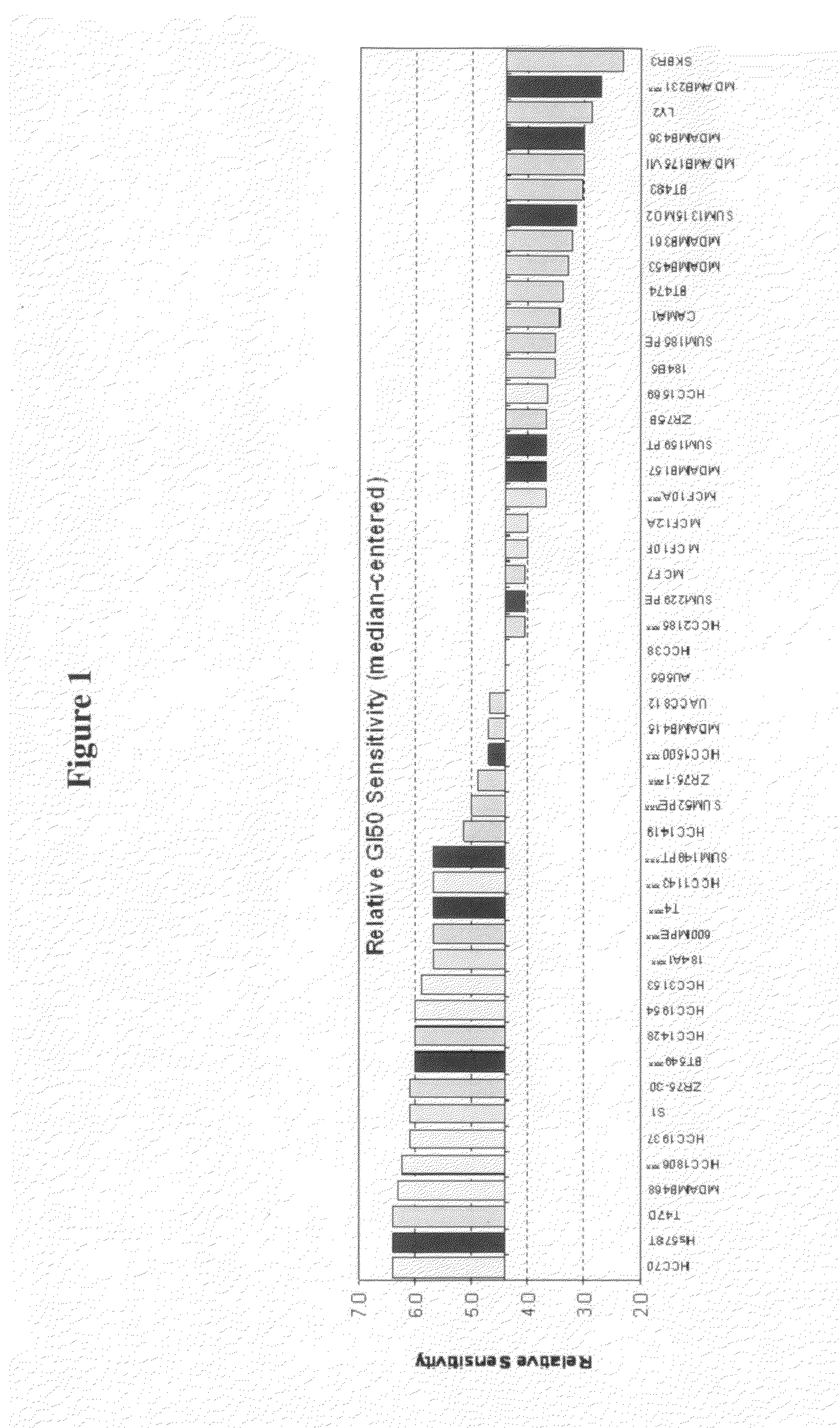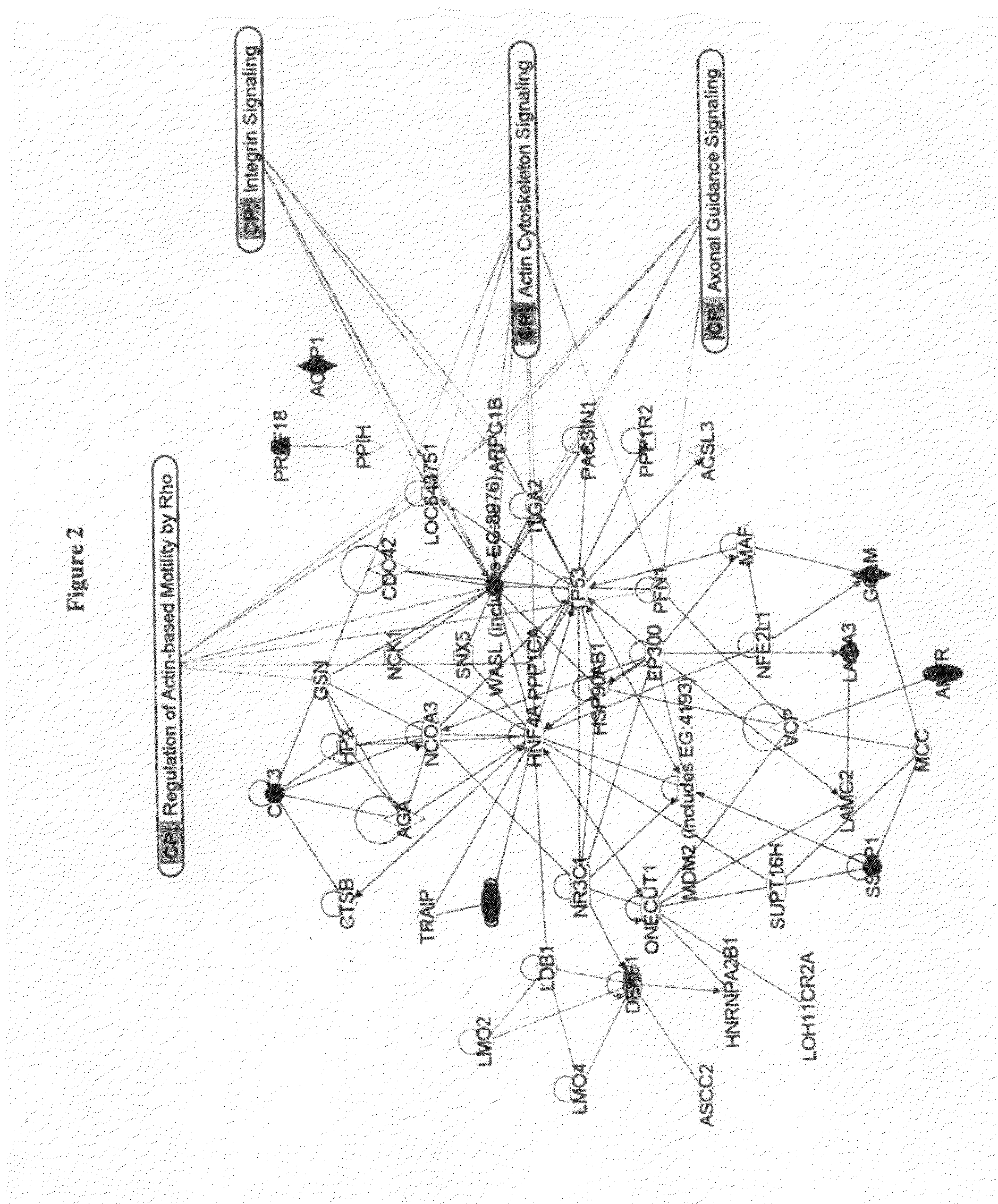Method to Predict Responsiveness of Breast Cancer to Polyamine-Type Chemotherapy
a breast cancer and polyamine-type technology, applied in the field of genetic markers involved in predicting the responsiveness of cancers, can solve the problems of a lack of data, a large number of cancer types, and many cancer types, most notably breast cancers, remain recalcitrant to treatment with drugs,
- Summary
- Abstract
- Description
- Claims
- Application Information
AI Technical Summary
Benefits of technology
Problems solved by technology
Method used
Image
Examples
example 1
Markers of Basal or Luminal Cancer Cell Subtypes
[0176]Analyses of expression profiles have been particularly powerful in identifying distinctive breast cancer subsets that differ in biological characteristics and clinical outcome (Perou et al., 1999, 2000; Sorlie et al., 2001, 2003). For example, unsupervised hierarchical clustering of microarray-derived expression data has identified intrinsically variable gene sets that distinguish five breast cancer subtypes—basal-like, luminal A, luminal B, ERBB2, and normal breast-like. The basal-like and ERBB2 subtypes have been associated with strongly reduced survival durations in patients treated with surgery plus radiation (Perou et al., 2000; Sorlie et al., 2001), and some studies have suggested that reduced survival duration in poorly performing subtypes is caused by an inherently high propensity to metastasize (Ramaswamy et al., 2003). These analyses already have led to the development of multigene assays that stratify patients into gro...
example 2
Effect of Conformationally-Restricted Polyamine on Basal versus Cancer Cell Subtypes
[0193]To better delineate the response of breast cancer cells to conformationally-restricted polyamines, we studied the anti-proliferation activity of CGC-11047 (SL-11047 or Compound 58 in Table 1) among the panel of 42 breast cancer cell lines and 6 non-cancerous breast cell lines (e.g., human mammary epithelial cells, HMEC) of known subtype (basal or luminal) with a plethora of genomic background mimicking the human breast tumors. Extensive genomic background of these cell lines have been reported by Neve et al. (2006).
[0194]Cell culture: Breast cell lines were obtained from the ATCC and from collections developed in the laboratories of Drs. Steve Ethier and Adi Gazdar.
[0195]Cell growth inhibition assay and data analysis: Cells were plated at proper density in 96-well plates such that they would remain in log growth at the end of assay time. The cells were allowed to attach overnight before being e...
example 3
Predictive Markers to Predict Sensitivity or Resistance to Conformationally-Restricted Polyamines
[0198]The GI50 study as described in Example 2 was used to determine predictive markers for sensitivity or resistance to treatment with conformationally-restricted polyamines, specifically, CGC-11047. This was performed through genome-wide correlation of mRNA levels as determined through a gene expression array with the measured GI50 values.
[0199]Affymetrix microarray analysis: The determination of gene expression (mRNA) levels was performed with a Affymetrix high density oligonucleotide array human HG-U133A chip as described in Example 1, except that the statistical analysis was performed by adaptive linear spline method.
[0200]Adaptive spline analysis: Adaptive linear splines proceed by searching for optimal partitions in the parameter space, characteristic of multiple classes, and fitting a linear model within each partition. The fitted function is continuous, resulting in a single opt...
PUM
| Property | Measurement | Unit |
|---|---|---|
| Length | aaaaa | aaaaa |
| Digital information | aaaaa | aaaaa |
| Digital information | aaaaa | aaaaa |
Abstract
Description
Claims
Application Information
 Login to View More
Login to View More - R&D
- Intellectual Property
- Life Sciences
- Materials
- Tech Scout
- Unparalleled Data Quality
- Higher Quality Content
- 60% Fewer Hallucinations
Browse by: Latest US Patents, China's latest patents, Technical Efficacy Thesaurus, Application Domain, Technology Topic, Popular Technical Reports.
© 2025 PatSnap. All rights reserved.Legal|Privacy policy|Modern Slavery Act Transparency Statement|Sitemap|About US| Contact US: help@patsnap.com



